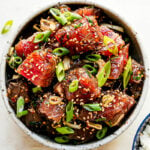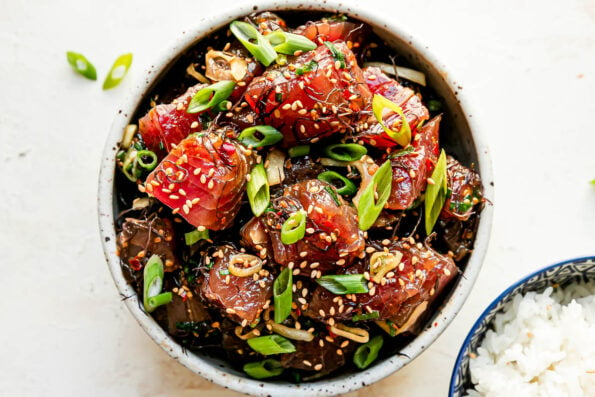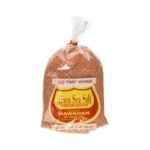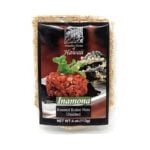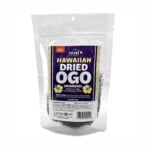Description
When poke cravings hit at home, my Mom’s Ahi Tuna Poke is the next best thing. Inspired by the shoyu ahi poke of her childhood in Honolulu, Mom and I have worked closely to honor the tradition of Hawaiian poke in this recipe while still making it easy and accessible for those of us on the mainland. You’ll want to take the time to source the right ingredients (we have lots of guidance included in the Recipe Notes, below!), but once you do, a bowl of ahi poke comes together really quickly.
Enjoy this ahi poke on its own as a pupu, spoon it over warm rice, or build a poke bowl – these Ahi Tuna Poke Bowls are how we most often enjoy shoyu poke at home.
If homemade poke is new-to-you, you’re in for such a treat – be sure to read through the blog post, above, to learn all about poke and its delicious history in Hawaii. ♡ We hope you love this special family recipe as much as we do!
Ingredients
- 1 pound sashimi-grade ahi tuna, diced into ¾-inch cubes (see Recipe Notes)
- ¼ large sweet onion, thinly sliced (approx. ¼ cup)
- 3 green onions, thinly sliced (approx. ⅓ cup)
- optional: 2 tablespoons dried ogo or limu (or ¼ cup rehydrated ogo or limu made from 2 tablespoons dried placed in 2.5 cups of lukewarm water). (Hawaiian seaweed, see Recipe Notes)
- 2–3 tablespoons shoyu or soy sauce (see Recipe Notes)
- 1 tablespoon toasted sesame oil
- 1 teaspoon Hawaiian sea salt (see Recipe Notes)
- 1 teaspoon finely chopped Inamona or macadamia nuts (see Recipe Notes)
- 1 teaspoon toasted sesame seeds
- ¾ teaspoon crushed red pepper
Instructions
- Mix the ahi poke: In a medium bowl, combine the cubed tuna, sliced sweet onion and green onion, ogo or limu (if using), shoyu, toasted sesame oil, Hawaiian sea salt, inamona or macadamia nuts, toasted sesame seeds, and crushed red pepper. Gently stir, combining the ingredients well. Cover and transfer to the refrigerator to marinate for at least 1 hour. [gallery columns="2" size="full" ids="37335,37337"]
- Serve: In Hawaii, poke is commonly enjoyed on its own as a pupu (appetizer). If you prefer to make a meal out of it, try spooning it over warm white rice or build a poke bowl (for more info, check out Mom’s Ahi Tuna Poke Bowls recipe – the best!) Enjoy!
Notes
- Ingredient Notes (+ a quick note from Mom! 🌺): Poke is traditionally made using some really interesting and special Hawaiian ingredients. If you’re a mainlander, many of these ingredients may be new-to-you, so we’ve provided detailed descriptions and some sourcing guidance below. Mom wanted to be sure to let you know that there’s no need to feel intimidated by the specialty nature of a few of these ingredients – you can still make a delicious poke at home using just fresh fish, onions, and the sauce!
- Ahi tuna: As the star of this poke recipe, it’s important to use the best quality ahi tuna you can find. Since poke is a raw preparation, it’s also important to source your fish from somewhere you trust. While some swear by using only “sushi-grade” or “sashimi-grade” fish, these designations aren’t regulated – this is an interesting read on the matter. Rather than focusing on specific labels, I suggest heading to your local fishmonger and letting them guide you in the right direction. If you’re local to the Twin Cities Metro, I am a big fan of Coastal Seafoods – they have storefronts in both Minneapolis and St. Paul. If you cannot find ahi tuna, this is also a great base recipe – feel free to swap tuna for salmon
- Ogo/Limu: Ogo and limu are varieties of Hawaiian seafood commonly used in poke to add crunchy texture and briney, oceanic flavor. While it can be a difficult and expensive ingredient to source here on the mainland, dehydrated seaweed is something you can easily order online and rehydrate according to package directions.
- Shoyu: Shoyu is the Japanese-style soy sauce that’s most commonly used in Hawaii. Its flavor is a little more mellow and round than soy sauces readily available in conventional grocery stores here on the mainland. Aloha Shoyu, which is brewed in Hawaii, is my favorite and a staple in my kitchen. If you cannot find shoyu, feel free to use whatever soy sauce you have on hand (or your favorite soy sauce alternative, like tamari, for a gluten-free dish).
- Hawaiian sea salt: Hawaiian sea salt is a crucial element of traditional Hawaiian poke. It’s less salty and richer in minerals than conventional salt – plus, it’s as authentic as it gets! I use ‘Alaea salt (red clay salt with naturally occurring minerals and iron, pictured) or this Hawaiian sea salt – either work wonderfully in this recipe. If you don’t wish to use Hawaiian sea salt, substitute with coarse rock-style salt.
- Inamona: Inamona is finely grated roasted kukui nut (candlenut), the nut from Hawaii’s official state tree, the kukui tree (candlenut tree). (If you’ve ever traveled to Hawaii, you may have seen or worn a kukui nut lei, a traditional Hawaiian lei that symbolizes protection and peace.) Inamona is made by cracking open the dark, smooth shell of a kukui nut and roasting, seasoning, and finely chopping the softer white nut inside. Inamona is traditionally used to season fish and it’s a crucial ingredient to real Hawaiian poke. While it can be a difficult and expensive ingredient to source here on the mainland, it is something you can order online. If you cannot find inamona, the mild flavor and meaty texture of toasted macadamia nuts make for a great substitute.
- Storage: While this ahi poke is best enjoyed fresh, the day it’s prepared, you can store leftovers in the refrigerator for up to 1-2 days. Enjoy leftovers straight out of the refrigerator.
